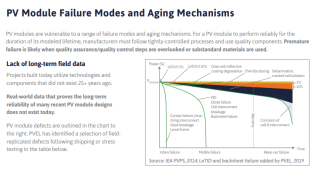I am lucky in that I have a Solar supplier about two miles from my house. I have gotten to know the owner and the staff very well and have gotten to play around with just about everything he sells, plus heard the owners own feelings on equipment and his field experience. At the end of the day he told me what I think
@Hedges post summed it up the best. Go for a brand known for reliability and durability.
The store I was going to had lots of various panels and Inverters for sale, I bought my Sol-Ark from them and one of my EFlex batteries. After the owner got to know me he said honestly I sell these Panel brands because most people want low priced panels. If you want something really good go with LG. Now this guy does not even sell LG panels so I had to go elsewhere to get them. That was a clear indicator to me that he was being very sincere.
When my LG panels arrived I can tell you straight up that they are not like the other 3 or 4 brands I looked at in his store. Much better construction, the glass and frame feels so much tougher, the sealing of the panel is so much better and the specs for performance was a lot better.
Once up on the roof I started to compare them to a house that I pass on the way home that has some big 72 cell low cost panels on it. Those always look dusty on the surface while my LG seem to almost repel dust and stay shiny. Even if a bit of dust sticks to them, it is gone after the next rainfall and the panels are once again shiny and new looking.
Since putting mine up I have heard some horror stories like
@Hedges of people not getting the same power levels from low cost panels after just 10 years. Others tell me of water leaking into the panels and other people say one or two of their panels developed dead cells.
If your just looking at the Short term then yeah go with anything that provides enough power and is sold at the best price. If your looking for that true 25-30 year lifespan your going to need top brand panels.




